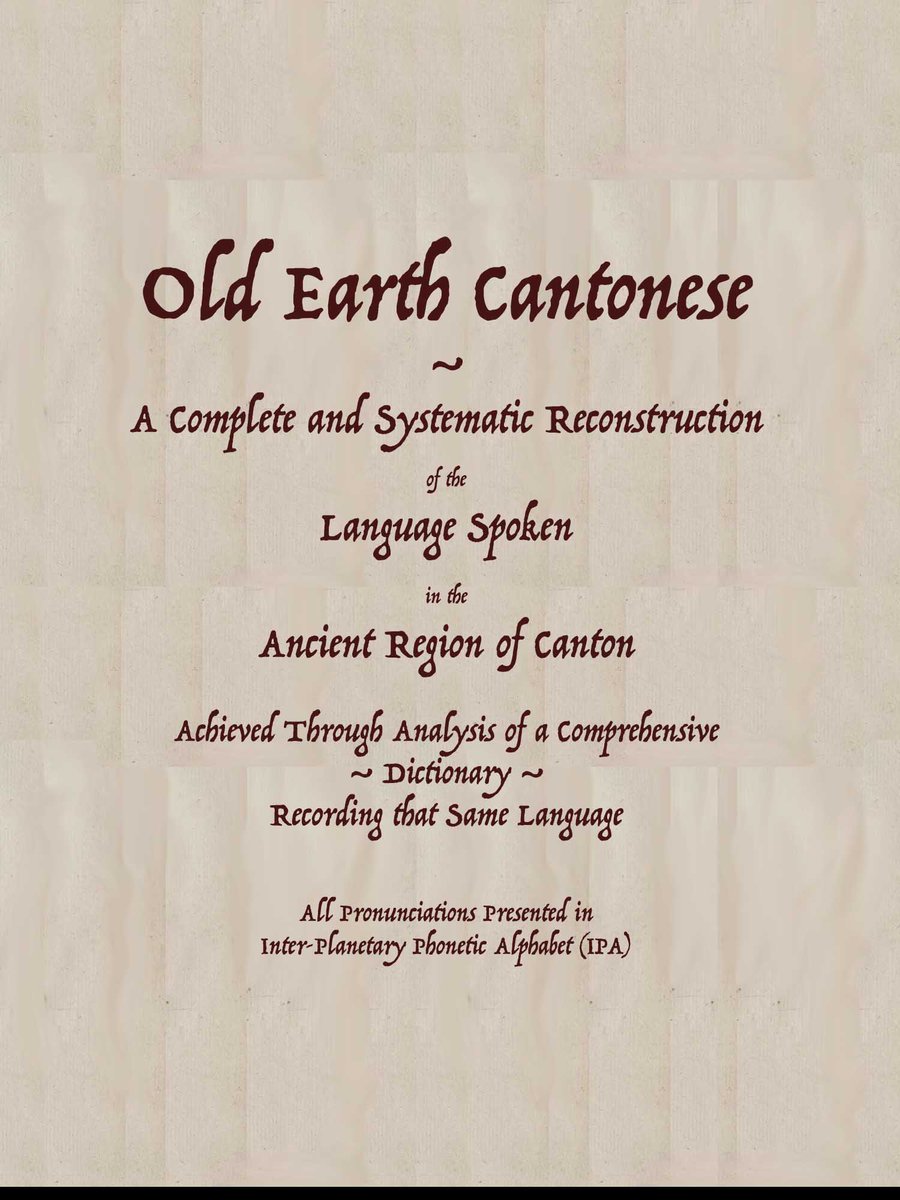I’m using this pinned tweet to keep track of my threads on language and linguistics—mostly focusing on sinograms, historical phonology, and etymology.
Occasionally Pokémon.
Languages: 🇨🇳🇹🇼🇭🇰🇰🇷🇰🇵🇯🇵🇻🇳 etc.
Occasionally Pokémon.
Languages: 🇨🇳🇹🇼🇭🇰🇰🇷🇰🇵🇯🇵🇻🇳 etc.
2/ A language quiz illustrating principles of sinographic writing
https://twitter.com/ZevHandel/status/1339459027831455744
4/ The development of the Chinese character 得
https://twitter.com/ZevHandel/status/1347772229866590208
5/ What can we learn about the history of sinography by writing English in Chinese characters?
https://twitter.com/ZevHandel/status/1350982094663651328
7/ The pronunciation of Korean bibimbap 비빔밥
https://twitter.com/ZevHandel/status/1357571288387100672
9/ The Mandarin names of the letters of the Latin alphabet
https://twitter.com/ZevHandel/status/1364802695123509248
10/ The Korean names of the letters of the Latin alphabet
https://twitter.com/ZevHandel/status/1366288215540310017
12/ The Pokémon names Hitmonlee and Hitmonchan in Japanese, Korean, and Chinese
https://twitter.com/ZevHandel/status/1368681874910973959
13/ Languages and scripts on Seoul subway signs
https://twitter.com/ZevHandel/status/1370629164726771712
14/ The function of Chinese-character “radicals”, and why most innovated Vietnamese Nôm graphs don’t have them
https://twitter.com/ZevHandel/status/1372792977211367427
17/ The morphology (word structure) of Korean bibimbap 비빔밥
https://twitter.com/ZevHandel/status/1380388164016111619
18/ More on Pokémon names, featuring Eevee
🇯🇵🇰🇷🇨🇳🇭🇰🇹🇼
#Pokémonastics
🇯🇵🇰🇷🇨🇳🇭🇰🇹🇼
#Pokémonastics
https://twitter.com/ZevHandel/status/1382927921199734790
19/ A recitation of a Daoist spell in reconstructed Chinese pronunciation of the Later Han Dynasty
https://twitter.com/ZevHandel/status/1389091392857665540
20/ A riddle related to the pronunciation of the numeric sign <6> in Korean
https://twitter.com/ZevHandel/status/1390898916195934210
21/ On syllable gaps in Mandarin, in particular the history of ga, ka, ha syllables
https://twitter.com/ZevHandel/status/1392705357156208643
22/ A humorous restaurant sign with a mysterious four-character phrase
https://twitter.com/ZevHandel/status/1395955029765357570
23/ The endpoint that never happened in the development of the Chinese character 得
https://twitter.com/ZevHandel/status/1398510821349617667
24/ A sinogram quiz for fun and education.
This set of eleven invented compound sinograms represent words in a variety of languages, based on a variety of reading traditions. Can you decipher any?
This set of eleven invented compound sinograms represent words in a variety of languages, based on a variety of reading traditions. Can you decipher any?
https://twitter.com/ZevHandel/status/1400691302694408196
25/ On a confounding pair of homophones in Chinese
https://twitter.com/ZevHandel/status/1404924847658979332
26/ On the number of radicals in Chinese characters, with a comparison to Egyptian hieroglyphs
[It's the loneliest number 😢.]
[It's the loneliest number 😢.]
https://twitter.com/ZevHandel/status/1410481764103950338
27/ On the Chinese character 亼, Lǔ Xùn, and some other related stuff
https://twitter.com/ZevHandel/status/1411478478558535680
28/ On Written Cantonese
(Yes, I know that tone mark in the image is wrong, s/b "m4 goi1".)
(Yes, I know that tone mark in the image is wrong, s/b "m4 goi1".)
https://twitter.com/ZevHandel/status/1414796995290570764
30/ On the 1977 proposed (and then rescinded) second-round simplification of Chinese characters
https://twitter.com/ZevHandel/status/1419528966772203523
31/ On the tonal aspect of rhyming in Chinese classical poetry
https://twitter.com/ZevHandel/status/1424613117917425665
32/ On the Zhongshan 中山 bronze seal-script inscriptions of the fourth century BCE
https://twitter.com/ZevHandel/status/1430753721131028482
34/ On which modern Chinese language is best for reading medieval Chinese poetry aloud
https://twitter.com/ZevHandel/status/1436542471400398853
35/ On the linguistic aspects of parallelism in medieval Chinese poetry
https://twitter.com/ZevHandel/status/1441635422652669954
36/ A surprisingly unfamiliar form of an ordinary letter
https://twitter.com/ZevHandel/status/1446332312556167171
38/ On homophones, orthographic differentiation, and Sino-Korean 수도
https://twitter.com/ZevHandel/status/1453940139244220420
39/ On jiáng and other weird-sounding second-tone Mandarin syllables
https://twitter.com/ZevHandel/status/1459756777235378179
40/ Thread continued: how jiáng came not to be
https://twitter.com/ZevHandel/status/1463403184970354688
Thread #41: The peculiar American English pronunciations of "Hyundai" and "Tokyo"
https://twitter.com/ZevHandel/status/1470168670936592386
• • •
Missing some Tweet in this thread? You can try to
force a refresh
















